MediaTek Dimensity 6080
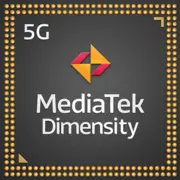
MediaTek Dimensity 6080: A Balance of Performance and Affordability in 2025
April 2025
Introduction
In the world of mobile technology, the choice of processor often determines how fast, energy-efficient, and future-oriented a smartphone will be. The MediaTek Dimensity 6080, introduced in 2023, has remained relevant by 2025 due to its successful combination of features. Let's explore what makes this system-on-chip (SoC) noteworthy, who it is suitable for, and how it compares to competitors.
1. Architecture and Manufacturing Process: The Basis of Efficiency
Cores and Frequencies
The Dimensity 6080 is built on a heterogeneous architecture with 8 cores:
- 2× Cortex-A76 with frequencies up to 2.4 GHz for resource-intensive tasks;
- 6× Cortex-A55 with frequencies up to 2.0 GHz for background processes.
This configuration provides a balance between performance and energy savings. The 1 MB L2 cache speeds up access to frequently used data, reducing latency.
GPU Mali-G57 MP2
The Mali-G57 MP2 graphics accelerator supports Vulkan 1.1 and OpenGL ES 3.2 APIs, allowing it to run modern games, albeit with moderate graphical demands. The two processing clusters (MP2) are focused on stability rather than record-breaking FPS.
6 nm Manufacturing Process
The use of TSMC’s 6 nm manufacturing process reduces heat output and increases energy efficiency. This is particularly crucial for smartphones with compact designs where implementing powerful cooling solutions is difficult.
2. Real-World Performance
Gaming
Mid-tier settings in Genshin Impact (30-40 FPS) and PUBG Mobile (60 FPS in HD) are typical scenarios. The Mali-G57 MP2 handles less demanding projects well, but lacks power for ultra settings in AAA titles of 2025. Support for displays with up to 120 Hz refresh rates ensures a smooth interface and casual gaming experience.
Multimedia
- Video: Hardware decoding for 4K@60 FPS (H.265, AV1);
- Audio: Support for Hi-Res Audio codecs;
- Displays: Resolution of up to 2520×1080 pixels, HDR10+.
Ideal for streaming, movie watching, and working with applications like Adobe Lightroom.
AI Tasks
The integrated AI processor (APU 3.0) speeds up:
- Photo processing (noise reduction, auto-HDR);
- Speech recognition (voice assistants);
- Battery charge optimization.
Energy Consumption and Heat
Thanks to the 6 nm process and load management (CorePilot), the chip rarely overheats even under prolonged use. In PCMark Battery Life tests, devices with the Dimensity 6080 show 12-14 hours of active use.
3. Built-in Modules: Connectivity and Communications
- 5G Modem: Sub-6 GHz (up to 2.77 Gbps), compatible with SA/NSA networks;
- Wi-Fi 6: Speeds up to 1.2 Gbps, stable connections in crowded networks;
- Bluetooth 5.2: Support for dual-device connections, LE Audio;
- Navigation: GPS, GLONASS, Galileo, QZSS.
The absence of mmWave 5G and Wi-Fi 6E is a compromise to reduce costs. However, this is sufficient for most users.
4. Comparison with Competitors
MediaTek Dimensity 700 vs 6080
- The 6080 has 35% higher performance in Geekbench 6 Multi-Core;
- Supports Wi-Fi 6 instead of Wi-Fi 5;
- Improved AI accelerator.
Qualcomm Snapdragon 7 Gen 1
- Snapdragon outperforms in GPU (Adreno 662 vs Mali-G57 MP2) — up to 20% better in gaming;
- Dimensity 6080 is 15% more energy-efficient due to 6 nm versus 7 nm;
- Devices with Snapdragon 7 Gen 1 are priced $50-70 higher.
Unisoc Tiger T800
- A budget alternative, but weaker in multi-threading (AnTuTu ~350k);
- No 5G modem.
5. Use Cases
Gaming
Suitable for mid-tier mobile games: COD Mobile, Honkai: Star Rail on medium settings. Stability is more important for streamers than maximum FPS.
Daily Tasks
Social media, messaging, web surfing — everything runs smoothly. Multitasking with 5-7 apps in the background does not overload the system.
Photo and Video
- Recording 4K@30 FPS with EIS;
- Support for up to 108 MP cameras;
- Night Mode and Portrait modes with AI processing.
For professional shooting, flagships are a better choice, but for amateur videos and photos, the chip is more than adequate.
6. Pros and Cons
Strengths
- Energy efficiency: 6 nm process + software optimization;
- Support for 5G and Wi-Fi 6;
- Affordable device price ($250-400);
- Good performance in everyday tasks.
Weaknesses
- Mali-G57 MP2 is weak for top-tier games of 2025;
- No support for Wi-Fi 6E and mmWave 5G;
- Limited charging speed (maximum 30W in most models).
7. Practical Tips for Choosing a Smartphone
What to Look For
1. Cooling: A vapor chamber or graphite layer will improve stability in gaming.
2. Display: Full HD+ with a refresh rate of 90-120 Hz will enhance interface smoothness.
3. Battery: Ideally 5000 mAh for 8-10 hours of screen time.
4. Cameras: Look for models with optical image stabilization (OIS) for clear photos.
Typical Devices
- Realme 12 Lite: $299, AMOLED 90 Hz, 64 MP camera;
- Xiaomi Redmi Note 14: $329, 5000 mAh, 67W charging;
- Motorola Moto G Power 2025: $279, stereo speakers, stock Android.
8. Final Conclusion: Who is the Dimensity 6080 Suitable For?
This processor is an ideal choice for:
- Budget-conscious users who want 5G without overpaying;
- Students— long battery life and smooth multitasking;
- Casual gamers who do not require ultra settings;
- Media enthusiasts— a quality screen and HDR support.
The main benefits: an optimal price-to-performance ratio, readiness for the future with 5G and Wi-Fi 6, and energy efficiency that keeps the charge lasting until the evening.
Conclusion
The MediaTek Dimensity 6080 proves that even two years after its release, it remains relevant in the mid-range segment. If you are looking for a smartphone "without paying extra for the brand," but with modern features, devices based on this SoC are worth considering first.
Basic
6x 2 GHz – Cortex-A55
GPU Specifications
Connectivity
Memory Specifications
Miscellaneous
Benchmarks
Phones with Dimensity 6080


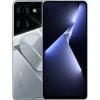
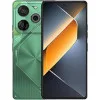
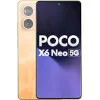
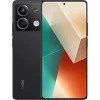
Comparison of Devices with Dimensity 6080
Compared to Other SoC
Share in social media
Or Link To Us
<a href="https://cputronic.com/en/soc/mediatek-dimensity-6080" target="_blank">MediaTek Dimensity 6080</a>

